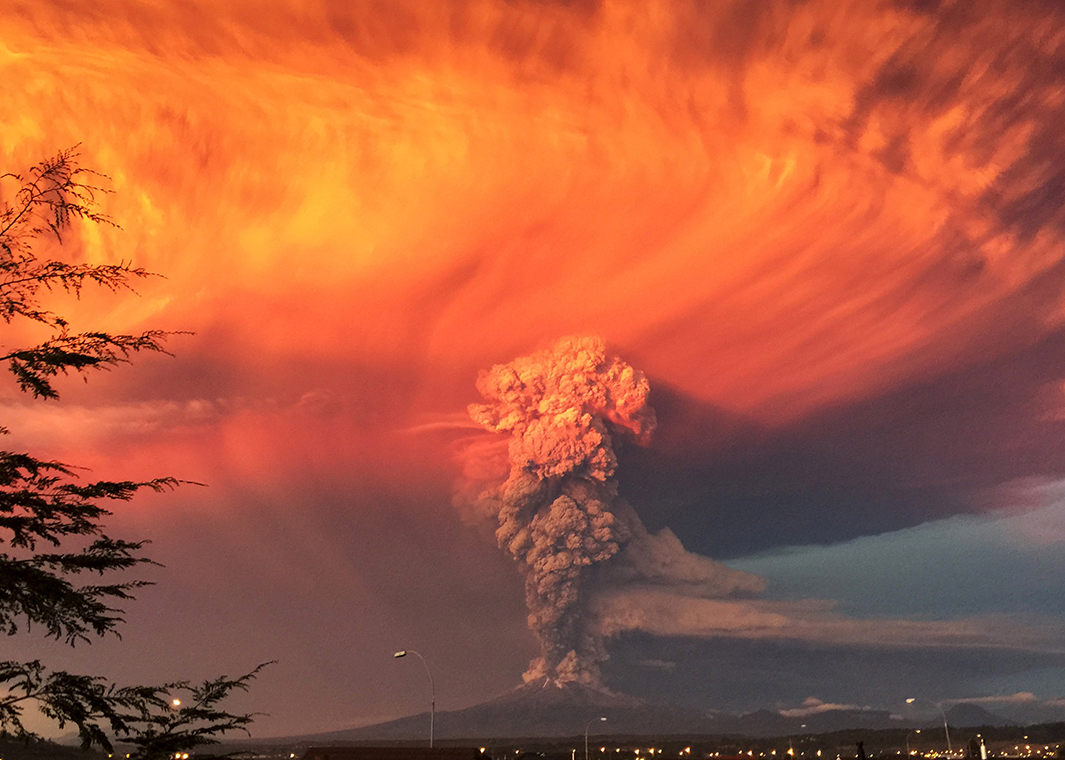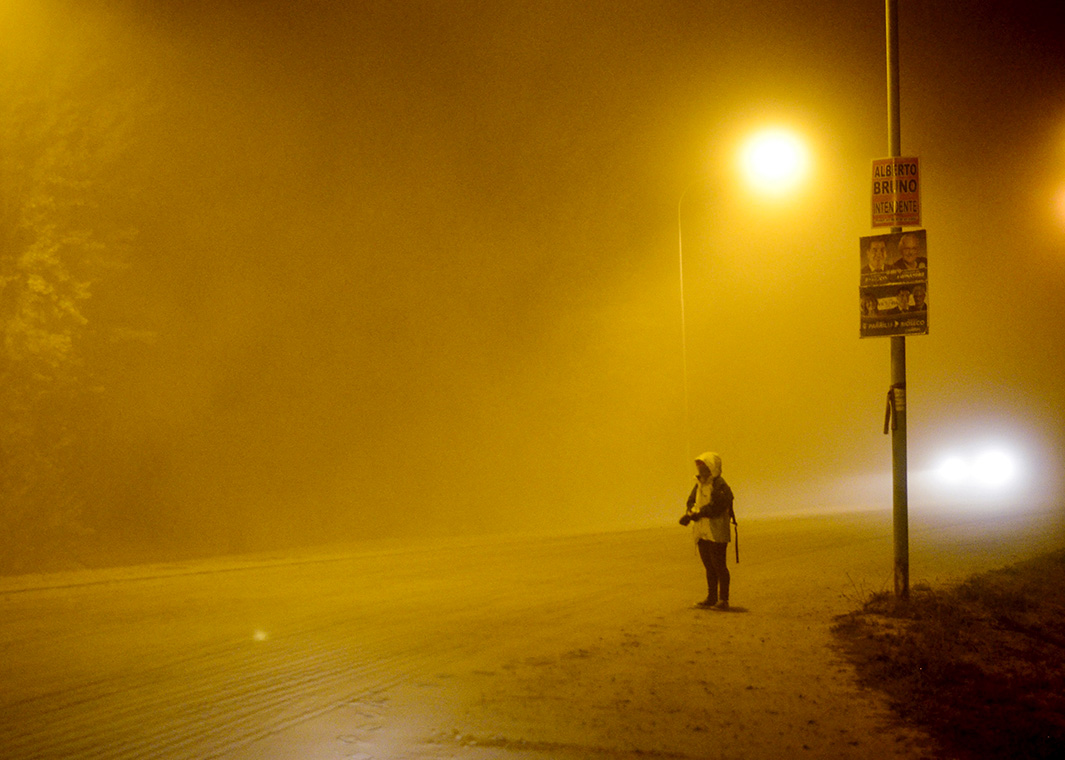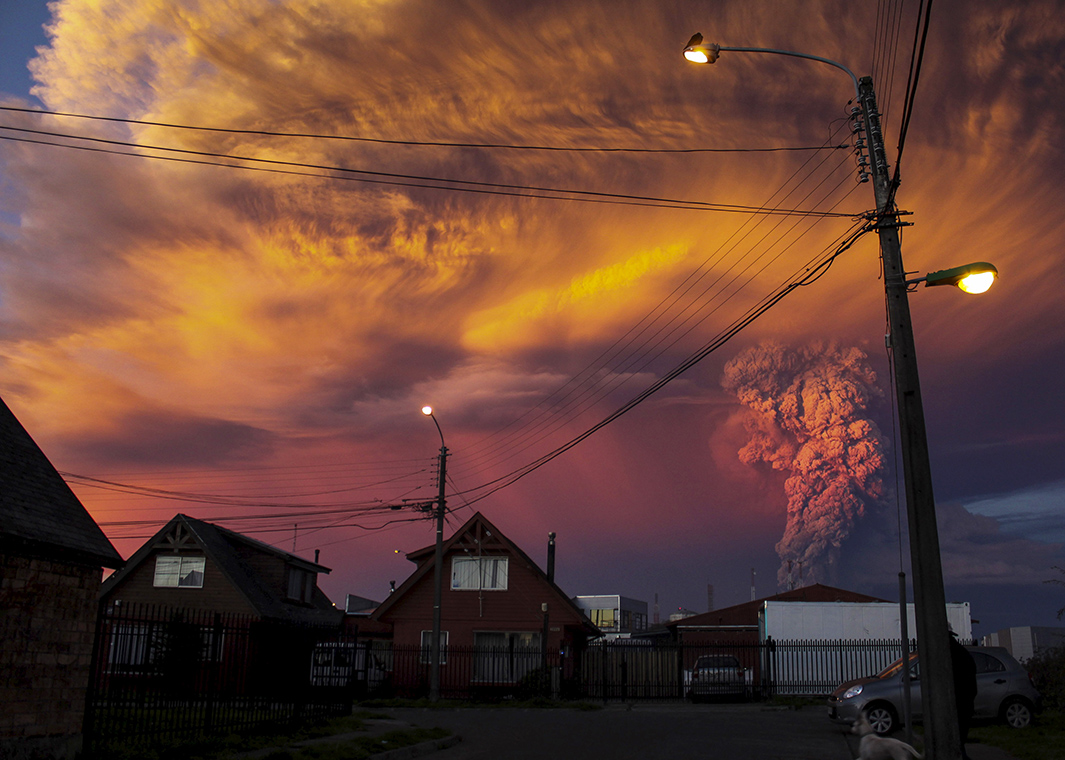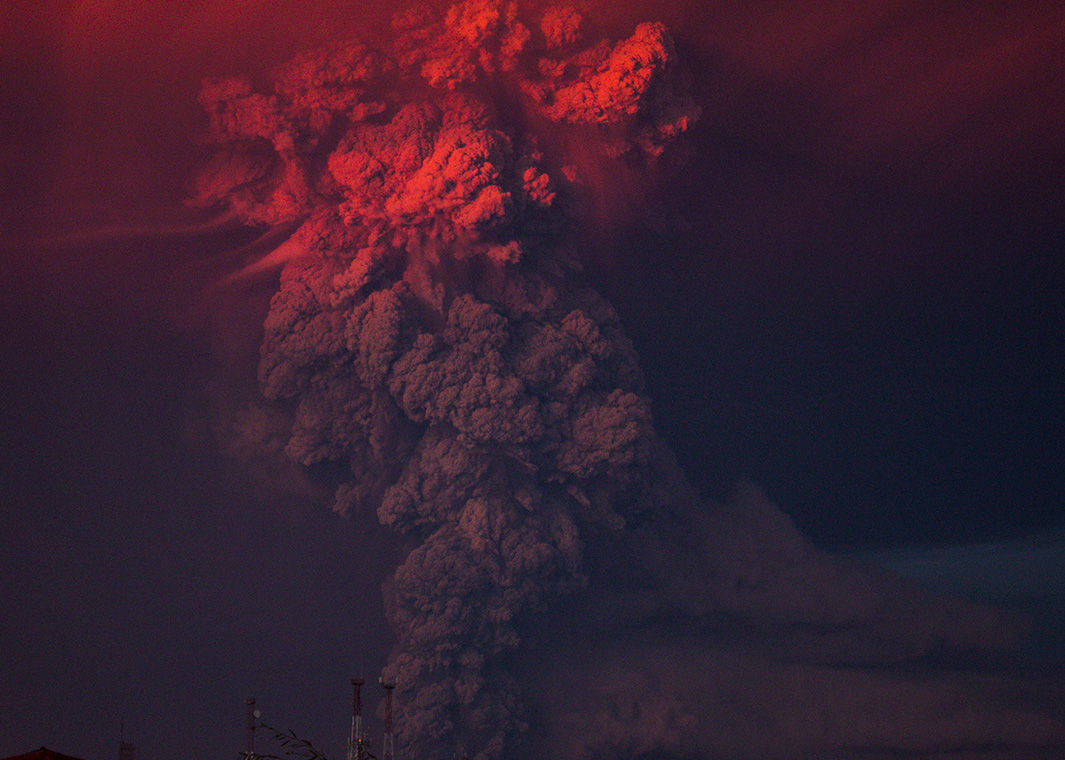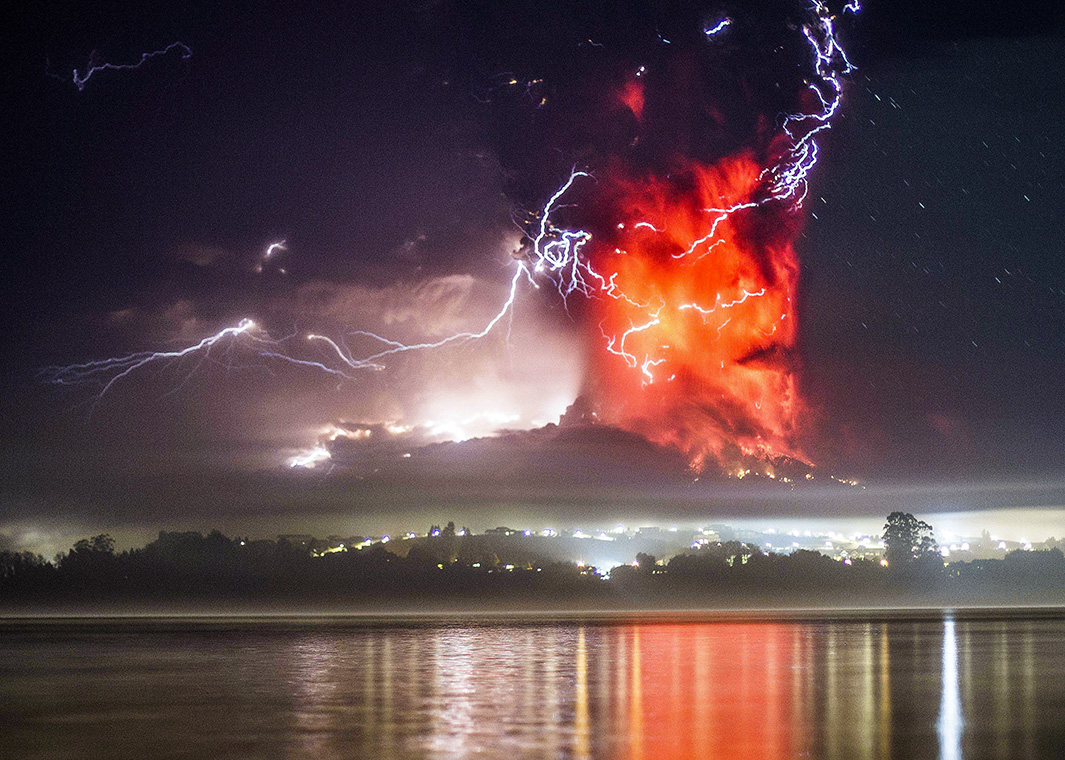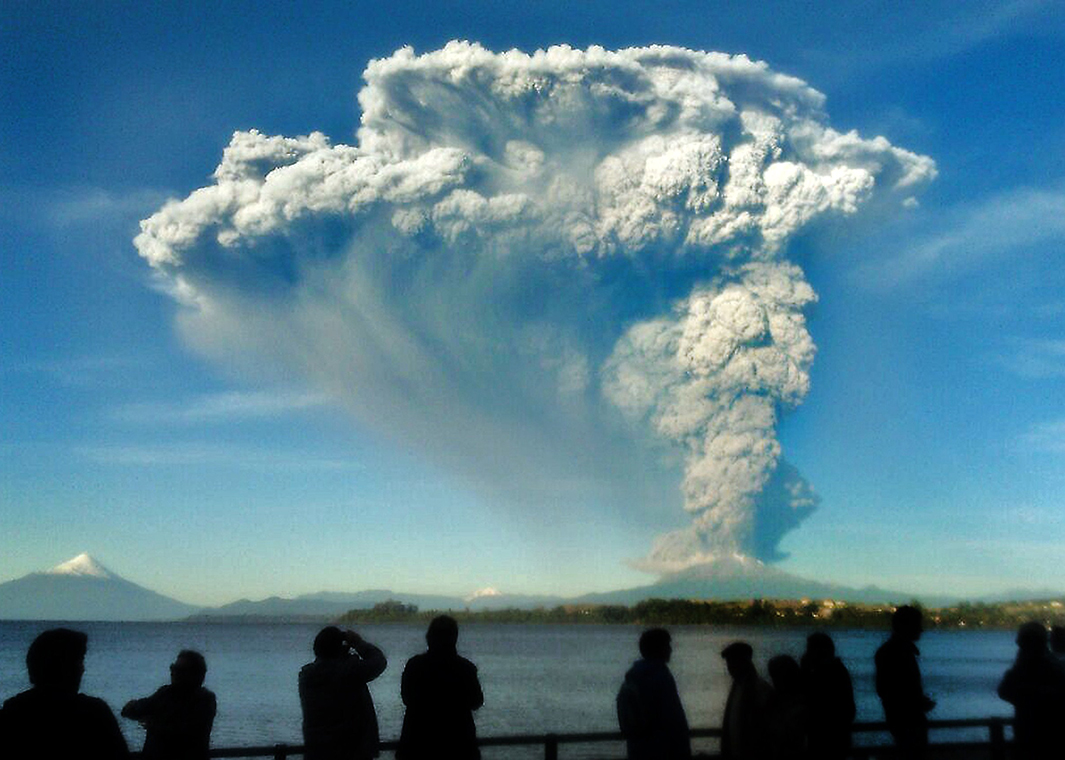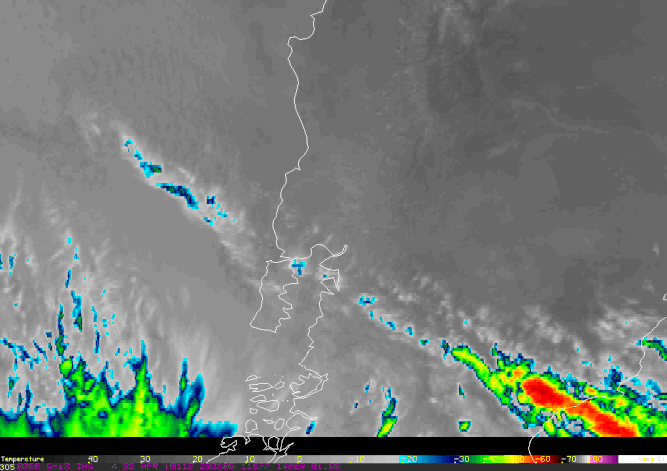Be Mesmerized by the Stunning Volcanic Eruption in Chile
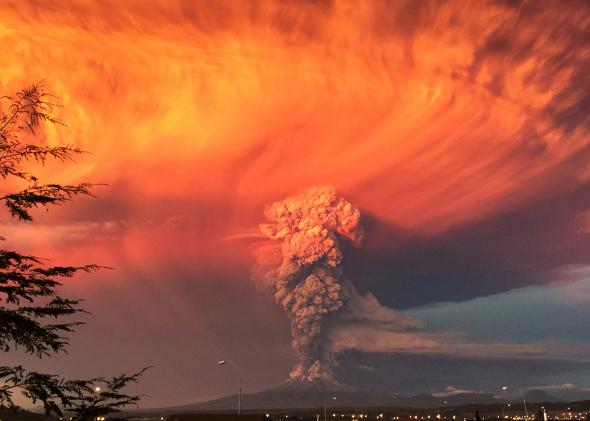
Photo by Rafael Arenas/STR/Reuters
On Wednesday afternoon residents of southern Chile were caught off guard when the Calbuco volcano, dormant for the last 42 years, unexpectedly sprang to life. According to official reports from the Chilean government, there was only 15 minutes of warning. Which is pretty frightening.
Thankfully, Chile is pretty excellent when it comes to protecting its citizens from volcanic hazards, and there have been no reports of deaths or serious injuries so far, though a nearby small town was evacuated.
Calbuco lies in a very active geological region, part of the so-called Ring of Fire of volcanoes and frequent earthquakes that encircles the Pacific Ocean, so an eruption like this isn’t at all out of the ordinary. But that doesn’t mean we can’t all gawk at the incredible photos.
Calbuco’s first eruption lasted about an hour and a half, shooting a photogenic plume of ash miles into the sky. Here’s what it looked like from a drone (the video is sped up about four times faster than normal):
A second, even stronger eruption began in the early hours of Thursday morning and lasted until just after sunrise. The second eruption featured highly electrified pyrocumulus clouds—producing an apocalyptic scene:
Calbuco has gone full Mordor tonight pic.twitter.com/0cOCt01Mz9 http://t.co/eWlofAoyvS
— Jon Passantino (@passantino) April 23, 2015
Volcán #Calbuco se reactiva con gran fuerza! #AhoraNoticias pic.twitter.com/OXZVMSnRG1
— Francisco Antonio (@pancholopt) April 23, 2015
I’ve written about pyrocumulus before—these clouds are produced when wildfires, volcanoes, or some other atypical heat source sends warm air rising upward, which then cools and condenses into tiny water droplets or ice crystals. If the updraft is strong enough, you can get a pretty amazing lightning show, which is exactly what happened at Calbuco.
Thanks to the proximity of Puerto Montt, a city of about a quarter-million people (which isn’t in immediate danger), there are loads of amazing photos and videos coming out of the region right now. (Check out the photo slideshow at the top of this post for more.)
The eruption was also visible from weather satellites and the International Space Station:
IR satellite image of the pyrocumulonimbus cloud from the Calbuco Volcano Erupting In Chile. pic.twitter.com/e6D10Wy9Y8
— Brad Panovich (@wxbrad) April 23, 2015
Just some minutes ago: ash clouds from #Calbuco volcano visible in #ISS live feed. pic.twitter.com/4AHNgCtHyF
— DLR_next (@DLR_next) April 23, 2015
In case you’re wondering, the Calbuco volcano is pretty photogenic on a normal day. I even had a chance to see it for myself back in 2011. Here’s what it looked like then:
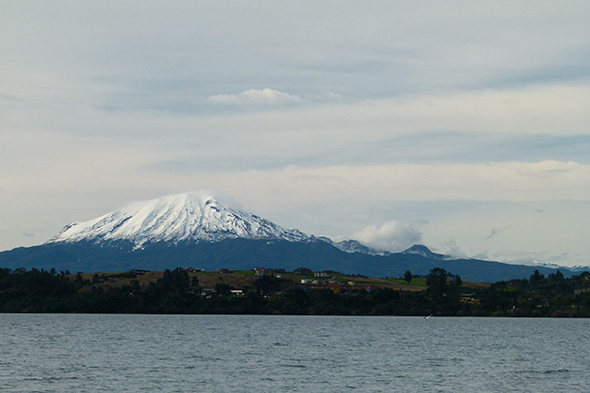
Photo by Eric Holthaus
As the eruptions themselves wane, ash is starting to accumulate on the ground nearby.
Ash falling in Chile RT @jotabrus: @chematierra lluvia de cenizas en ciudades cercanas al volcán Calbuco pic.twitter.com/mwA0EHYNKy
— Erik Klemetti (@eruptionsblog) April 23, 2015
The ash cloud has already made it all the way to Argentina:
Impacto de la ceniza del #VolcánCalbuco en #Argentina #VillaAngostura pic.twitter.com/gzdle6ZP45
— Sernageomin (Chile) (@Sernageomin) April 23, 2015
Guillermo Abramson, who lives in Bariloche, Argentina—less than 100 miles from Calbuco—also captured some stunning photos of the ash cloud moving overhead.
Since it’s been so explosive so far, there’s a chance Calbuco’s ash could help slightly cool the planet for the next year or two, according to a quick survey of climate scientists by the Carbon Brief. The first three months of 2015 were record-warm worldwide, and thanks to a building El Niño, the globe is currently on pace for the warmest year on record—as long as Calbuco doesn’t interfere.
On Thursday morning I spoke with Erik Klemetti, a geoscientist at Denison University who writes the Eruptions blog at Wired, and is generally my go-to source when things like this happen.
Klemetti says that so far, Calbuco has produced a “fairly benign eruption for its size.” That said, “anytime you get that much material kicked up into the air, once it comes down it’s going to be a hazard.” Klemetti said that besides the obvious breathing risk with all the falling ash, there could be lingering impacts to drinking water, farmers, and damage from mudflows.
At this point, it’s impossible to know if there will be further eruptions, but Klemetti speculated that Calbuco could continue to produce a “series of explosions and then lava flows for a while.” Klemetti said that Chile has an eruption like this every five years or so.
What’s most shocking is how suddenly the volcano sprang to life. “Less than 24 hours ago, the volcano was completely on the lowest alert level,” Klemetti said. “Volcanoes will sometimes throw you a curveball.”

